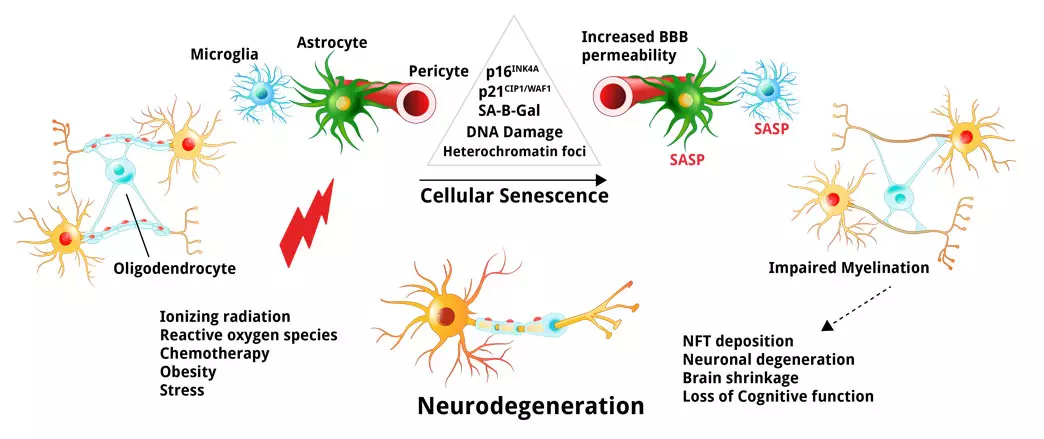You have no items in your shopping cart.
Neurodegenerative Diseases
Overview
A Neurodegenerative disease (NDD) is an illness involving the death or disorder of certain parts of the brain and Central Nervous System (CNS). People often get confused about the difference between Alzheimer's disease and dementia. Dementia is a syndrome (a group of related symptoms) associated with an ongoing decline of brain functionality observed in neurodegenerative conditions. There are many different causes of dementia, with genetics and environment playing major roles in the pathology of NDs. The most common neurodegenerative disorders are amyloidosis, tauopathies and α-synucleinopathies. Research shows there are currently more than 850,000 people in the UK who have some form of dementia. One in 14 people over the age of 65 are affected by dementia and the condition affects 1 in 6 people over 80. Due to increases in life expectancy, the number of people with dementia is increasing. It is estimated that by 2025, the number of people with dementia in the UK will be more than 1 million.
Symptoms of NDDs
Memory loss.
Decreased mental agility and clarity.
Language processing issues.
Fine motor control skills dysfunction and movement impairment.
Muscular atrophy due to impaired mobility.
Behavioural and mood issues.
NDD pathology
Environmental factors, such as the consumption of alcohol and prolonged exposure to aluminium based compounds have been shown to increase the likelihood of developing Dementia. Genetic factors also play an important role, with research showing that mutations in genes such as PINK-1, Parkin and Amyloid-Beta increasing the incidence of ND in carriers.
| Pathology | Mechanism |
|---|---|
| Amyloidosis |
|
| Tauopathies |
|
| Synucleopathies |
|
Neuroinflammation in NDDs
Neuroinflammation refers to the acute and continued activation of the CNS immune system, primarily driven by glial cells such as Astrocytes and Microglia. Individually, they each perform a wide range of roles in the maintenance and development of the CNS. Astrocytes are responsible for the maintenance of neuronal intracellular levels of glutathione (GSH) and are the foundation of the blood-brain barrier. GSH is a major antioxidant, it is involved in intracellular detoxification and the removal of Reactive Oxygen Species (ROS). Microglia are phagocytic cells that facilitate the removal of aged, necrotic tissues and toxic molecules from circulation within their surroundings when activated.
When an injury or perceived threat is detected by the CNS immune cells, the reactive activation results in the transcription of numerous proinflammatory mediators, such as the transcription factor families NF-κB and STAT. Left unchecked, this will result in damage to neural tissue typically seen in neurodegenerative disorders due to sustained immunological attack.

ISRIB
ISRIB (integrated stress response inhibitor) is an experimental drug, which has been observed to reverses the effects of eIF2α phosphorylation. It was discovered by the Walter lab at UCSF through a semi-automated screening of a variety of small molecules.
ISRIB has been shown to inhibit eIF2α phosphorylation-induced stress granule (SG) formation. Since eIF2α phosphorylation is involved in memory formation, ISRIB was subsequently tested for in vivo activity, during which time it was found to readily cross the blood-brain barrier.
ISRIB Treatment and Memory Loss: A possible treatment for Alzheimer’s Disease?
Subsequent testing in 2013 found ISRIB produced a significant nootropic effect in mice, measured by enhancement of spatial and fear-associated learning in both standard water maze and conditioned environment tests.
Further testing in 2017 showed the experimental drug improved the ability of brain-injured mice to learn and form memories during memory tests. This was noted as appearing to reverse impairments from traumatic brain injury. Further studies have shown ISRIB treatment also corrects spatial memory deficits and improves working memory in aged mice.

